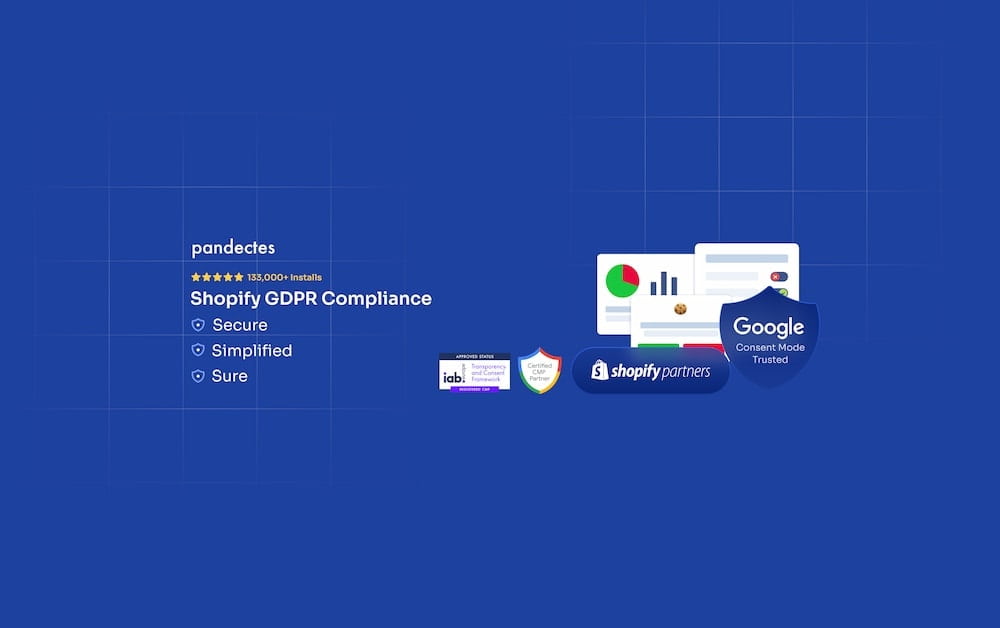Introduction to IAB TCF 2.2
The Interactive Advertising Bureau (IAB) has introduced the Transparency and Consent Framework (TCF) version 2.2, a significant update to the industry-standard framework for obtaining and managing user consent for data processing in the digital advertising ecosystem. IAB TCF 2.2 aims to provide a more transparent and user-friendly experience for consumers while also addressing the evolving needs of the digital advertising industry.
This latest version of the consent framework is designed to enhance how publishers, advertisers, and vendors handle user data and ensure compliance with stringent data protection regulations. By adopting IAB TCF 2.2, stakeholders can better manage user consent, improve transparency, and foster trust in the digital advertising landscape.
Understanding IAB TCF v2.2
The Interactive Advertising Bureau (IAB) Transparency and Consent Framework (TCF) is central to managing user consent for data processing in digital advertising. With the recent release of TCF v2.2, the framework has introduced updates to enhance transparency, protect user data, and improve consent practices. The goal of the TCF is to standardize consent collection and data processing across the digital advertising ecosystem, ensuring compliance with regulations like the General Data Protection Regulation (GDPR).
The IAB TCF enables seamless consent management by providing a common language for publishers, advertisers, and Consent Management Platforms (CMPs). The framework ensures that users are informed about data collection and have control over how their data is used, which is increasingly crucial for compliance and fostering trust in the digital advertising industry.
Overview of the Transparency and Consent Framework
https://pandectes.io/blog/7-key-scenarios-where-gdpr-exemptions-apply/The IAB TCF is a set of guidelines and technical specifications that enable digital advertising companies to communicate with users and obtain consent to process their data. The framework provides a standardized way for publishers and vendors to collect and manage user consent, ensuring compliance with regulations such as the General Data Protection Regulation (GDPR) and the ePrivacy Directive. IAB TCF 2.2 builds on the previous versions, introducing new features and enhancements to improve transparency, user control, and consent management.
By providing a common language and set of protocols, the IAB TCF helps streamline the process of obtaining and transmitting user consent across the digital advertising ecosystem. This ensures that user preferences are respected and data processing activities are conducted transparently and compliantly.

What is IAB TCF?
The IAB TCF provides a structured approach to obtaining, managing, and communicating user consent under GDPR. It outlines a technical and policy framework that helps ad systems and CMPs transmit user consent signals to publishers and vendors in the European Economic Area (EEA). The framework also enables the distribution of user preferences to ensure that consent status is respected across platforms, creating a uniform user experience.
The TCF framework also requires CMPs and vendors to update their technical specifications and consent strings, ensuring that user consent and preferences are accurately recorded and transmitted. As data privacy laws evolve, the TCF is expected to be essential for meeting these requirements and promoting transparency.
Key Updates in IAB TCF v2.2
TCF v2.2 introduces several updates, most notably removing Legitimate Interest as a legal basis for processing data related to personalized ads and content. This change reflects a greater emphasis on obtaining explicit consent for targeted advertising and data collection. TCF v2.2 also standardizes vendor information, ensuring users receive clear, user-friendly descriptions of data processing purposes.
The framework improves transparency and user control by expanding on purpose names and providing more detailed information on data processing activities. By adopting these changes, publishers and advertisers can facilitate compliance with data protection laws and build user trust.
Google’s New CMP Requirements
Google now requires that publishers in the EEA and the UK use a Google-certified CMP that integrates with IAB TCF v2.2 to serve ads. CMPs must not only comply with TCF v2.2 but also meet additional standards set by Google to ensure data privacy and transparency. For personalized advertising, Google’s requirements underscore the importance of precise consent signals and reliable data processing practices.
Google’s ad tags are integral for transmitting consent signals from the CMP to Google’s systems. A Google-certified CMP enables publishers to effectively transmit user consent to Google’s ad systems, ensuring compliance and the ability to serve personalized ads. Certification ensures CMPs can provide a consent experience that aligns with Google and IAB standards, fostering platform consistency.
Google’s CMP Certification for IAB TCF v2.2
To be certified by Google, CMPs must integrate fully with TCF v2.2 and satisfy additional criteria set by Google. Certification ensures that the CMP can accurately capture and transmit user consent and that vendors meet Google’s transparency and user control standards. Google’s requirements aim to create a cohesive digital ecosystem that respects user consent and data privacy.
Certification is necessary for CMPs working with Google’s publisher products, such as Google Ad Manager and Google AdSense, particularly for serving personalized ads. The certification process covers various technical specifications, including how consent strings and signals are transmitted.

Implementing IAB TCF v2.2 with Ad Manager
To implement IAB TCF v2.2 with Google Ad Manager, publishers must transition to the updated consent framework and familiarize themselves with the new requirements. Key steps include reviewing the TCF 2.2 documentation, updating vendor lists, and making necessary adjustments to systems and processes. This approach helps ensure compliance with both IAB and Google standards.
Google Ad Manager users should also work with Google-certified CMPs to establish clear consent preferences and transmit accurate signals. This integration enhances the ability to serve personalized and non-personalized ads based on user consent.
Benefits of IAB TCF 2.2 for Publishers
IAB TCF 2.2 offers several benefits for publishers, including:
Improved Transparency and User Control: IAB TCF 2.2 provides a more user-friendly experience for consumers, enabling them to make informed decisions about their data processing. This increased transparency helps build trust between publishers and their audience.
Enhanced Consent Management: The framework provides a standardized way for publishers to collect and manage user consent, reducing the risk of non-compliance with regulations and ensuring user preferences are accurately recorded and respected.
Increased Trust and Credibility: By adopting IAB TCF 2.2, publishers can demonstrate their commitment to transparency and user privacy, building trust with their audience. This can lead to stronger relationships with users and advertisers alike.
Better Ad Revenue: IAB TCF 2.2 enables publishers to serve personalized and non-personalized ads, increasing their ad revenue potential. Publishers can optimize ad inventory and attract more advertisers by respecting user consent preferences.
Choosing the Right CMP for TCF v2.2 Compliance
To comply with IAB TCF 2.2, publishers must choose a Consent Management Platform (CMP) certified by Google and integrated with the TCF v2.2 framework. Selecting the right CMP is critical to meeting regulatory and business needs while ensuring an optimal user experience. Pandectes GDPR Compliance CMP stands out as an excellent choice for several reasons:
Google Certification
Pandectes GDPR Compliance CMP is Google-certified, ensuring it meets the criteria and specifications required by both Google and the IAB TCF v2.2 framework. This certification assures that the CMP can effectively manage user consent, communicate with Google’s ad systems, and comply with all necessary standards. With this certification, Pandectes helps publishers avoid potential compliance issues and penalties by guaranteeing that consent signals are accurately transmitted and maintained.
Seamless Integration with TCF v2.2
Pandectes offers seamless integration with TCF v2.2, enabling reliable and accurate data processing and consent management across various ad systems. The platform’s robust technology supports the efficient transmission of consent signals, allowing publishers to stay compliant and transparent with user data. By fully supporting the latest TCF specifications, Pandectes ensures that publishers can manage consent in line with updated regulatory requirements, making it an ideal choice for publishers needing reliable integration.

User-Friendly Interface
Pandectes GDPR Compliance CMP prioritizes ease of use with a user-friendly interface that simplifies user and publishers’ consent management process. Its intuitive design lets users understand and manage their consent preferences quickly, enhancing transparency and engagement. The platform provides customizable options for consent banners and detailed yet accessible descriptions, which can lead to higher consent rates and improved user trust.
Scalability and Flexibility
Pandectes CMP is built to scale and adapt to evolving regulatory needs and organizational changes. This flexibility makes it an ideal choice for publishers seeking a solution that can grow with their business. Pandectes regularly updates its platform to reflect changes in the IAB framework, data protection laws, and best practices, ensuring publishers remain compliant without significant additional investments. Its flexibility in accommodating future updates also helps reduce the long-term administrative burden of compliance management.
By choosing Pandectes GDPR Compliance CMP, publishers can rest assured they have a compliant, scalable, and user-friendly solution that meets Google’s certification standards and is fully aligned with IAB TCF v2.2.
Custom Implementation Options
While TCF v2.2 offers a structured approach, it also provides flexibility for custom implementation, such as mobile-specific adaptations. Organizations should review custom options and consider how they can adapt the consent framework to meet their specific requirements. For example, implementing TCF 2.2 for mobile applications may require consent string handling and signal transmission adjustments.
Custom illustrations of data processing activities can also help make consent forms more user-friendly and improve the user experience. Customizations should prioritize transparency and help users understand how their data will be processed.
Monetization and Growth with TCF v2.2
Compliance with TCF v2.2 is an investment in user privacy and long-term monetization. As advertisers increasingly require TCF compliance, publishers who adopt TCF v2.2 can gain access to more programmatic advertising opportunities. Ad revenue growth will depend on a publisher’s ability to respect user choices and accurately communicate consent preferences to vendors.
Programmatic advertising and real-time bidding will increasingly rely on the ability to serve ads based on explicit user consent. By implementing TCF v2.2, publishers can enhance their reputation and attract advertisers focused on privacy and transparency.
Monetization Partnerships and TCF v2.2 Compliance
Many advertisers prefer to work with publishers who prioritize privacy and consent. By aligning with TCF v2.2, publishers can build stronger partnerships with advertisers who seek transparency in data processing and consent practices. This alignment can lead to higher ad revenue and a more stable revenue stream, particularly as regulations around data privacy tighten.
Complying with TCF v2.2 demonstrates a commitment to ethical data processing and builds trust with users and advertisers. Staying compliant will be crucial to maintaining a competitive edge as privacy regulations evolve.
Best Practices for TCF v2.2 Compliance
Publishers should follow best practices to maintain compliance with TCF v2.2. Ensuring a user-friendly consent experience and communicating data processing purposes helps build trust and improves user engagement. Google recommends using certified CMPs to ensure consistent compliance and transmit consent signals accurately.
Regular audits and updates to CMPs are essential to keep up with regulatory changes and new IAB updates. Publishers should also document their data processing practices to provide transparency and demonstrate compliance to regulators.

Upholding User Trust with Consistent Consent
The primary objective of TCF v2.2 is to create a transparent and user-centered digital advertising ecosystem. By adopting the new framework, publishers can show users they value privacy and are committed to responsible data use. This commitment to transparency enhances user trust and engagement.
Google’s adoption of TCF v2.2 helps ensure that user data is handled consistently and compliantly across its advertising network. Users benefit from clearly understanding how their data will be processed and retained.
Staying Up-to-Date with TCF v2.2 Enhancements
As privacy regulations and data protection requirements evolve, publishers and advertisers should stay informed about TCF updates and best practices. Regular reviews of TCF vendor information and adjustments to the Global Vendor List help ensure ongoing compliance and transparency.
Testing and publishing updates before going live are essential for minimizing disruptions and maintaining consistent user experiences. Staying up-to-date with TCF v2.2 improvements allows companies to adapt to regulatory changes and maintain compliance quickly.
Google Tag Manager and TCF v2.2
Google Tag Manager (GTM) can simplify the implementation of TCF v2.2 by enabling publishers to manage consent strings and signals. GTM can help automate the transmission of user preferences to Google’s ad systems, reducing the burden on publishers and CMPs.
GTM integration ensures user consent is accurately recorded and transmitted to vendors in real time. By using GTM with TCF v2.2, publishers can streamline consent management and focus on optimizing ad performance.
Data Processing and User Consent
Obtaining explicit consent for data processing is central to TCF v2.2 compliance. Publishers must provide clear information about data processing operations and the purposes for which data is collected. By doing so, they can enable users to make informed choices about their data.
Under TCF v2.2, data processing must align with user consent and preferences, particularly when serving personalized ads. This focus on user choice and control aligns with GDPR requirements and reinforces data privacy.
Non-Personalized Ads and User Preferences
TCF v2.2 supports the option of serving non-personalized ads for users who choose not to share personal data. Non-personalized ads allow publishers to generate revenue while respecting user consent and limiting data collection.
The framework allows publishers to honor user preferences for personalized and non-personalized ads, creating a more inclusive advertising experience. This approach can help publishers retain ad revenue while respecting user privacy.

Consent Signals and Consent String Transmission
The consent string, or TC string, is a key component of the TCF framework. It transmits consent signals from CMPs to vendors, ensuring user preferences are accurately communicated. The TC string allows ad systems to process data based on user consent, facilitating compliance and enhancing transparency.
Accurate consent string transmission is critical to ensuring that user preferences are honored across platforms. With TCF v2.2, publishers must work closely with CMPs to implement consent strings effectively.
Compliance with Belgian Data Protection Authority Requirements
The Belgian Data Protection Authority has ensured that TCF standards meet GDPR requirements. Compliance with their guidelines is essential for publishers operating in the EEA and processing user data for advertising purposes.
Adhering to TCF standards can help publishers avoid penalties and demonstrate compliance to the Belgian Data Protection Authority. By aligning with TCF v2.2, companies can facilitate GDPR compliance and reduce regulatory risk.
User Control and Data Retention
TCF v2.2 enhances user control over their data by requiring explicit consent for specific data processing purposes. Users can withdraw consent anytime, providing flexibility and control over their personal information.
The framework also outlines data retention periods, ensuring that personal data is stored only as long as necessary. These guidelines align with GDPR requirements and help publishers maintain a user-friendly approach to data privacy.
Conclusion
TCF v2.2 represents a significant step forward in creating a transparent and privacy-focused advertising ecosystem, which is crucial in our increasingly digital world. By aligning with this updated framework, publishers can build trust with users and ensure they are maintaining compliance with the ever-evolving data protection regulations that are becoming more stringent worldwide. This alignment is essential as users are now more aware of their privacy rights and looking for businesses and platforms to prioritize their data security.
Furthermore, integrating Google Ad Manager with IAB TCF v2.2 offers a clear pathway to a more ethical and user-centered approach to digital advertising. It enables publishers to effectively communicate their data practices to users, empowering them to make informed choices about their personal information. This shift addresses the growing demand for greater accountability and transparency in advertising practices, ultimately leading to a more respectful relationship between advertisers, publishers, and consumers. In this new landscape, the focus on user consent and data protection benefits consumers and supports publishers in fostering a sustainable advertising environment.



